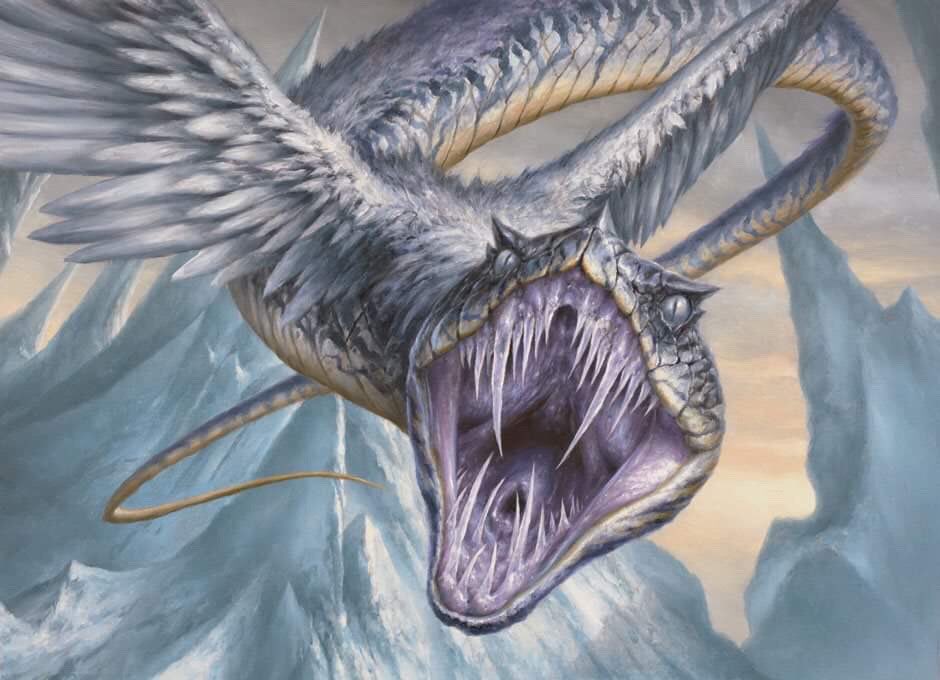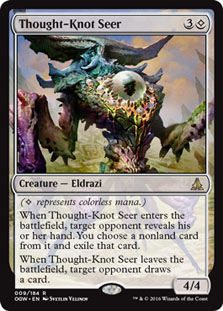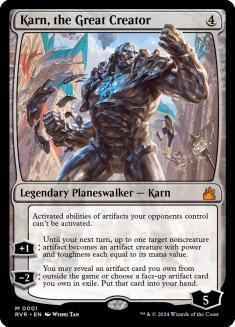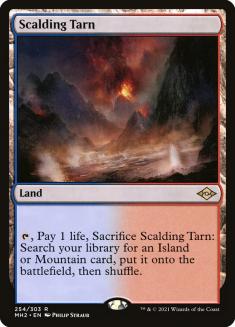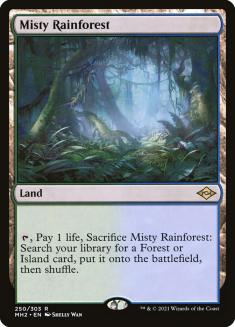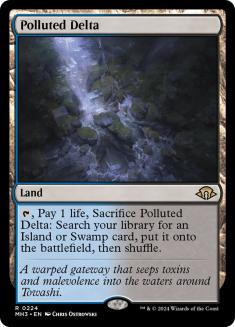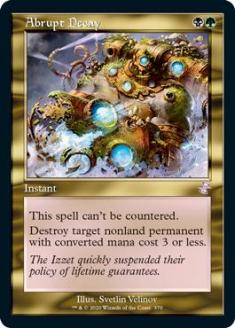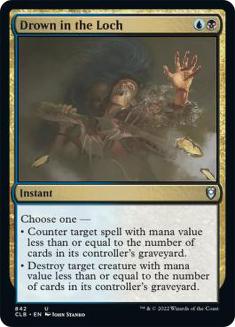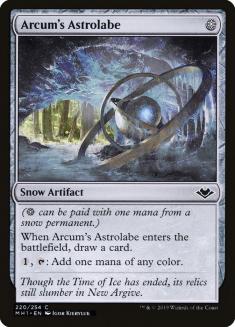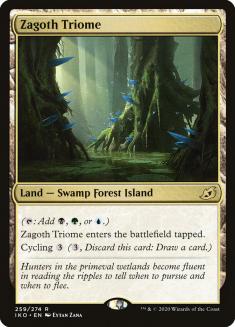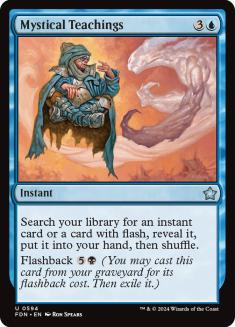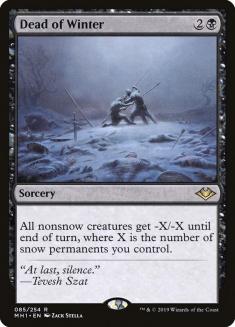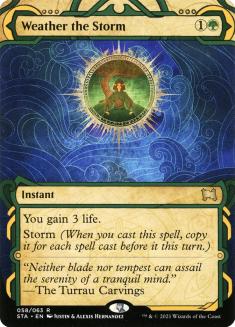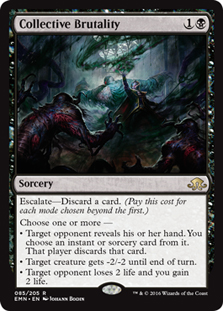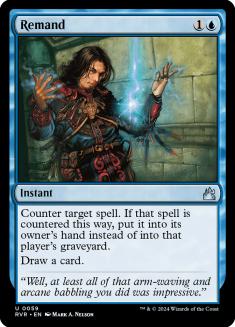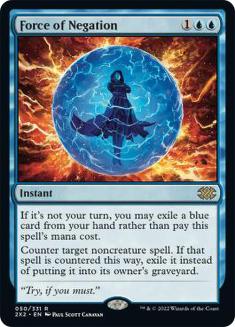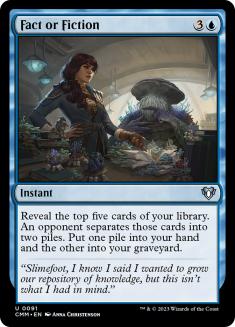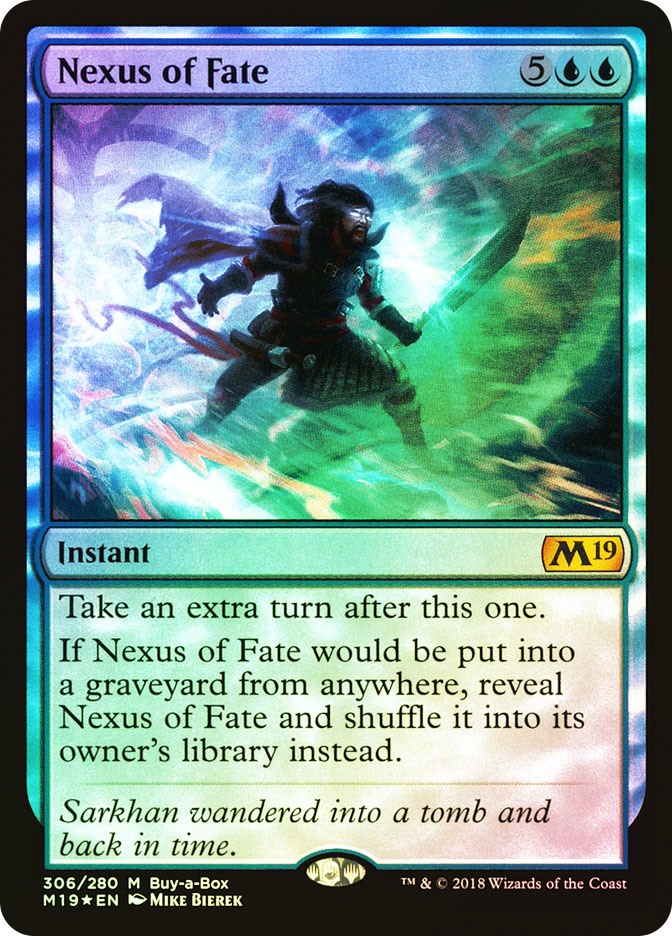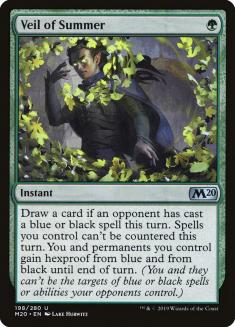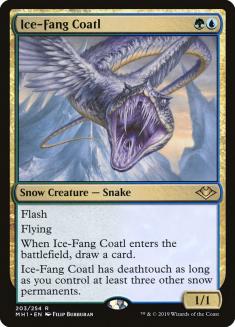A couple of months ago, I wrote an article about Simic Reclamation in Modern. This article was published when I’d mostly just been exploring what was possible with Wilderness Reclamation in Modern, where Simic Reclamation seemed very promising to me. Following the article I played the deck much more extensively, was personally crushing Leagues with the deck including being undefeated in my first two leagues, and after I drew more attention to it, others tweeted out that they were having success with my list and variations on it. The deck picked up enough popularity for a week or two that I even ran into a 75-card mirror match on my stream.
Then, Ikoria: Lair of Behemoths released. My pet deck was promptly forgotten about as people looked for the best way to break companions instead. It turns out that Simic Reclamation gained a pretty big power upgrade in Ikoria too, though. If you’ve not read that previous article then this one can be read independently of it, though there are a bunch of play patterns and synergies that are still relevant to my updated Reclamation list that are explored in that article that I won’t repeat here. For those who don’t want to read the previous article, here’s where I was with the archetype right before Ikoria entered Modern:
Creatures (7)
Lands (26)
Spells (27)

The question of how to update this deck for the new companion-centric Modern is going to come down to how to integrate Yorion, Sky Nomad into it. None of the other companions really fit, and even if any others did, Yorion’s power level is pretty obscene to the point that it would overshadow them anyway.
Initially I was sceptical of adding Yorion to the deck, as it doesn’t seem to synergise particularly well with what the deck already does and I was concerned that drawing Wilderness Reclamation, Cryptic Command, and Growth Spiral less often would be a painful cost to pay. On top of that, in an 80-card deck it is much harder to get to the point where you’ll draw your one-of Nexus of Fate over and over again, whereas the 60-card version would frequently get to the point where it would have only a few cards left and could therefore go infinite.
These are definitely costs, they meaningfully change how the deck plays, and they cause you to want to construct your deck and sideboard differently from how you might otherwise, but they don’t necessarily make the deck worse. The most notable shift in play-style and deckbuilding is that you’re forced to be a bit more controlling and be able to interact with the battlefield more. The previous iteration of this archetype already tended more towards the control end of its combo-control moniker, but the addition of Yorion means you have to push even more in that direction.
Whilst there are costs to going up to 80 cards, there are also some pretty big benefits as well. The obvious one is Yorion itself. Sure, it’s an eighth card in your opening hand, which is appealing, and sure it will often draw you a card or two when it enters the battlefield, and all of that is very appealing, but it does something really special in control decks specifically. It is a roadblock against aggressive decks, stopping the opposing creatures in their tracks, that demands your opponent keep in some removal spells for it that are awful against you in the games that aren’t about Yorion. It’s able to suddenly and dramatically change what the game is about in a way that few other additional cards could.
It’s also a pretty effective way to tackle down opposing planeswalkers that the previous version of this deck couldn’t kill. A great matchup to show all of these benefits is Eldrazi Tron, which was already a good matchup beforehand, but Yorion’s body invalidating Thought-Knot Seers and being able to attack down Karn, the Great Creator means that a lot of avenues your opponent could try to go down to steal games from you just aren’t even that good anymore.
One final benefit to Yorion, that was very unexpected to me but keeps coming up, is that you also just kill people with it, pretty often in fact. People use their life total as a resource aggressively against you, and sometimes all it will take to kill them is a couple of Cryptic Commands tapping down their battlefield so that you can push across three swings at their life total. Against red decks in particular this ability to just end the game, giving them less time to draw to lethal burn spells, is very appreciated and relevant.
The other large benefit is less obvious. Your manabase, in Modern, and especially in Modern Mystic Sanctuary decks, gets noticeably better as you add more cards to it. You want to draw as many fetchlands as possible as in the early game these fix your mana and in the late-game they find your Mystic Sanctuaries; fetchlands are just the best lands in your deck. You have to have three shocklands though, and four Sanctuaries, and personally I liked having ten basics so that I don’t run out of mana sources to fetch up in the super-late-game, and suddenly the 60-card build only has room for nine fetchlands.
However, when you increase the size of the deck you don’t have to add much in the way of fetchable lands. This means the majority of additional lands I’m adding are fetchlands, which means the ratio of fetchlands to fetchable-lands is higher, which makes me more likely to draw a fetchland on average than I was beforehand. In my new list I play the full sixteen blue fetchlands, instead of the previous nine, meaning there’s now a 47% chance a land I draw is a fetchland as opposed to the previous 35% chance. This is a huge upgrade for fixing your colours early on in the game, a huge upgrade for top-decking a way to access Mystic Sanctuary late-game, and means you’ll be more able to consistently fuel the escape cost of your Uros as a greater proportion of the lands you’re drawing will add a card to your graveyard for you.
After running the archetype through two Modern Challenges and a few Leagues, here’s where I am currently with my update to the Modern Reclamation archetype, now called Yorion Sultai Reclamation.
Creatures (8)
Lands (34)
Spells (38)

As well as adding eight more lands and adding the fourth copies of Uro, Titan of Nature’s Wrath and Fact or Fiction, there are ten spell slots for new spells in the deck. These slots seek to integrate a third colour of mana into the deck, and they speak to how the deck has become, by necessity, more controlling than before.
Beforehand I wouldn’t have included spot removal spells in the maindeck even if I had been playing black mana, but if we’re going to be playing a slightly slower, more controlling build, then there’s a lot more pressure to be able to kill opposing creatures. The slow matchups are still going to be good for you anyways, just like they were before, so giving preference to having relevant interaction in Game 1 against the faster and more aggressive decks in the format is important. To this end there are three copies of Fatal Push, an Abrupt Decay, and a Drown in the Loch in the maindeck to ensure we can kill early creatures.
This splash is supported by single copies of Watery Grave and Zagoth Triome we can fetch up, as well as four copies of Arcum’s Astrolabe. I didn’t play Astrolabe previously as you didn’t need the colour fixing in your two-colour deck, and it not being an instant was surprisingly annoying with Wilderness Reclamation at times, but the moment we want to both add a third colour and play Yorion as our companion, the card becomes a slam dunk. Letting Ice-Fang Coatl have deathtouch in the early-game more consistently is a nice upside too, and again the fact that this sorcery-speed spell can stifle your Wilderness Reclamation mana usage is nowhere near as relevant as it was beforehand because the deck doesn’t get those weird pseudo-combo finishes where it draws 25 cards across a couple of turns very often anymore anyway.
The final inclusion looks cute, but it has been excellent, dramatically overperforming my expectations. Initially I was playing a second copy of Nexus of Fate to ensure that I could still draw Nexus with a decent frequency in the late-game, but Teachings is a much better version of that second Nexus as, by the time in the game that you really want to draw that Nexus of Fate, it represents two copies of that card rather than just one.
The really remarkable thing about Mystical Teachings in these late-game spots is that you can also just return it with Mystic Sanctuary. If you have both Yorion and Wilderness Reclamation on the battlefield, your opponent will die from starting life to a hand of Mystical Teachings and two fetchlands; Teachings for Nexus, Sanctuary your Teachings, Teachings for Nexus, Sanctuary your Teachings, Teachings for Nexus, flashback Teachings for Nexus, and that’s five combat steps right there.
Drawing Mystical Teachings in your opening hand isn’t that much better than having that second Nexus of Fate, but it is still an improvement as it can track down a removal spell or a crucial Cryptic Command against creature decks. The removal suite is specifically designed with this in mind as Abrupt Decay serves as a one-of you can search for to kill Teferi, Time Raveler, whereas Drown in the Loch being in the deck lets you search for a two-mana counterspell when your mana is tight.
My sideboard started out more varied, but it became very clear across my first handful of matches that you simply didn’t need to go overboard with anti-control cards, partially as these matchups were already good for you and partially because you very rapidly reach a point where the cards you’re sideboarding out to make room for more anti-control cards aren’t even that bad in the matchup; like, sure, Ice-Fang Coatl is a card I’d rather not have against Yorion Snow Control decks, but the fact that it replaces itself means that having to keep it in my deck in the sideboarded games isn’t really that much of a cost either.
Meanwhile it was very clear which decks I most wanted the extra help against, and my sideboard is now hard-targeting Lurrus Boros Burn and the Lurrus Prowess decks. Dead of Winter is just an incredible follow-up to their Lurrus turn, letting you clear up the Lurrus and whatever creature it brought back. Meanwhile Weather the Storm will save you on the turns where they try and prowess their creatures up to a formidable size, often letting you gain as much as twelve or fifteen life. With one of these cards punishing your opponent for going wide, and one punishing them for going tall instead of developing their battlefield more, and three copies of each that can also be recurred by Mystic Sanctuary once you’ve drawn them, the only matchups I actually lost to in my first two Modern Challenges with Yorion Sultai Reclamation has started to feel much better for me than they were previously.
Sideboard Guide
VS Lurrus Boros/Mardu Prowess
Out:
In:
Formerly among the harder matchups, though it’s pretty even now with the additional sideboard cards. There’s a tough balancing act of making sure you always have access to an answer to an impending Lurrus of the Dream-Den whilst also ensuring you’re interacting with your opponent’s battlefield enough to keep your life total healthy. Force of Negation is unappealing in general as the Prowess decks grind well and the games can go long, but I would keep some number of this card in, as I’ve seen Boil in the sideboarded games.
VS Lurrus Boros Burn
Out:
In:
A pretty similar plan as against the Prowess decks, except being able to go long matters less as your opponent’s deck topdecks much worse than Prowess does which in turn makes me feel much happier using two cards to Force of Negation a burn spell. You can definitely have more copies of Dead of Winter in your deck in the sideboarded games as killing the opposing creatures does matter a lot, though I tend to feel that this card is a lot worse than instant-speed removal spells are here due to quite how much your life total matters, and the fact you’ll be one-for-oneing with it so much more here than against Prowess means you’ll almost always be trading down in mana.
VS Lurrus Jund
Out:
In:
A lot of the games in this matchup feel very close, though in practice I’ve been winning most of them anyway. Contain their battlefield for as long as you can, don’t leave yourself weak to your opponent deciding to just jam Lurrus, and build towards trying to soft-lock your opponent out with Cryptic Command bouncing your Mystic Sanctuary and tapping their team.
Make sure to use your life total as a resource in order to resolve card advantage spells and develop your mana, but don’t let yourself get into Lightning Bolt range in the process; in an ideal world you’ll never let yourself drop below seven life, though this can be a much harder condition to meet than staying above four. Wrenn and Six ultimates are nearly unbeatable, which means that if a Wrenn slips through and you don’t have time to attack it with Yorion, you will have to try to set up a scenario where you can bounce Wrenn with Cryptic Command when it gets to seven loyalty.
This is the matchup where killing your opponent with Yorion happens most often due to the opponent’s removal suite being bad at killing the sky-noodle, and your opponent’s painful manabase and Thoughtseize-damage meaning it will often only take three attacks to end the game.
VS Eldrazi Tron
Out:
In:
This matchup was favoured pre-Yorion, and Yorion has made it even more favourable for you due to how well the card lines up against Karn, the Great Creator. Force of Negation is secretly great in the matchup as your opponent’s noncreature spells are their most threatening cards whilst the creatures get out-classed by Uro and Yorion, and having a Force in hand makes it much easier to tap out for one of these haymaker creatures of yours.
The end-game will often end with you setting up Cryptic Command bouncing Mystic Sanctuary loops, so once you get to that point, make sure your opponent never resolves an Expedition Map, as this can find Tectonic Edge to interrupt your loops, and depending on how stable you feel, consider casting Cryptic Command in your opponent’s upkeep to play around them drawing the Tectonic Edge for the turn.
VS Yorion Temur Scapeshift
Out:
In:
I keep in Abrupt Decay so that I have an answer to Wrenn and Six as that card is one of the easiest ways to lose games. You are much better at generating card advantage at instant speed than they are which makes you pretty clearly favoured; just make sure you always have enough mana up to put up a reasonable defence against their threats and you will be fine.
These Wilderness Reclamation decks are among my favourite decks I have ever played in Modern, and this iteration feels quite powerful to me too. Good luck to all those who decide to give it a spin!

